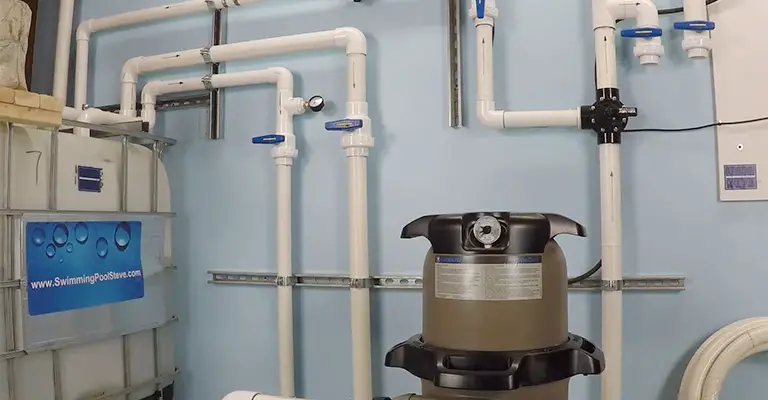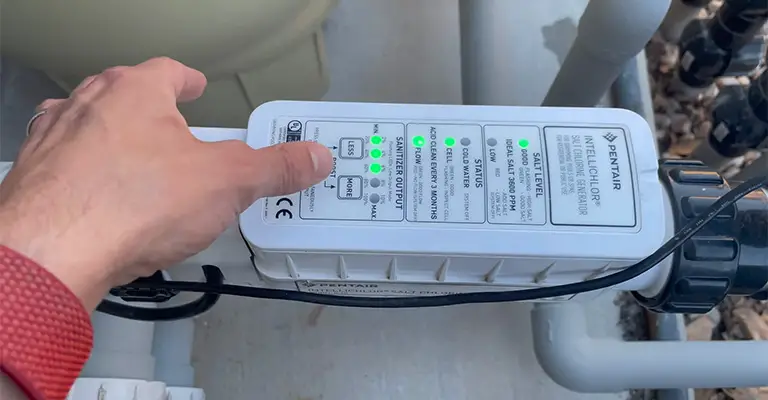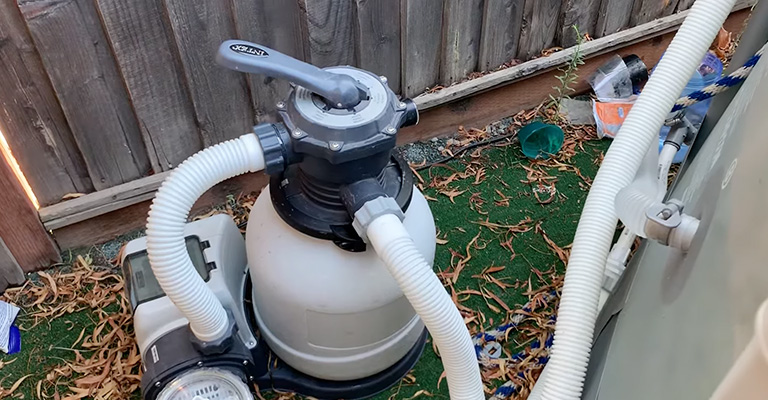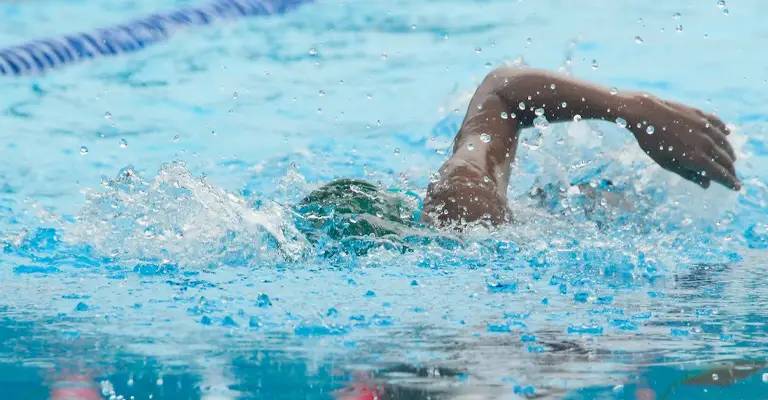The maintenance and upkeep of your home is an expense that most homeowners want to reduce. You can keep your money in the bank if you know a little bit about your swimming pool.
You can use a swimming pool flow meter to monitor the plumbing and mechanical systems of your pool.
It measures how quickly water circulates through the plumbing system of your swimming pool.
There are many people who experience problems with their pool flow meters, including inaccurate readings, erratic behavior, or complete failure.
There is no doubt that pool flow meters are tough items of equipment, but it’s not uncommon for them to have some problems.
So, let’s dive into this article and learn how to diagnose and fix common pool flow meter problems.
How Do You Know If Your Pool Flow Meter Isn’t Working?

It’s important to monitor the performance of your pool flow meter regularly to ensure accurate readings. A malfunctioning pool flow meter may show some of these signs.
1. Physical Damage
The accuracy and functionality of your pool flow meter may be affected if there is any visible damage to it, such as cracks, dents, or corrosion.
The flow meter’s performance may be affected by physical damage, sensor misalignment, or other problems.
2. Flow Meter Not Powering On
You may need to replace the power supply or electronic components of your flow meter if your digital flow meter does not power on.
3. Zero Flow Readings
In the event that your pool flow meter shows zero flow readings despite knowing that water is flowing, there is a problem with the flow meter itself.
4. Inconsistent Flow Readings
There is a possibility that your pool flow meter is not accurately measuring the flow rate if you notice inconsistent or fluctuating readings.
It may also indicate that the flow meter is not measuring the flow accurately if you have unusually high or low readings from your pool flow meter.
What To Do If You Pool Flow Meter Isn’t Working

Whether your pool flow meter is inline, analog, or digital, here’s my troubleshooting guide.
It is undoubtedly possible to do these fixes yourself, but if you are unsure, consult a professional. There are a few common issues you may encounter, and their fixes listed below.
1. Fluctuating Readings
Inconsistent or fluctuating results on your flow meter may indicate a mechanical issue, which can affect the flow measurement accuracy.
How To Fix It
If you see debris or blockages obstructing the flow of water in the pool, you should inspect the flow meter. Cracks or heavy rust should be checked on the pipe.
Make sure the flow meter is clean and free of debris that may affect the accuracy of the readings. Also, make sure there are no air bubbles in the flow meter and expel them. Prime the pump or filter to get rid of air.
Make sure the pump is running smoothly and there are no leaks, gurgling or hissing sounds, or bubbling water.
Check for loose connections that might be causing the flow rate readings to fluctuate and tighten them.
2. Power Supply Issues

Are you receiving enough power to your flow meter? Even the most resilient infrastructure can be damaged by a storm. Power supply problems can cause your digital flow meter not to turn on at all.
How To Fix It
Ensure that your wiring is in good working order. Batteries should be tested and replaced if the flow meter is battery-powered.
3. Environmental Factors
A flow meter’s performance can be affected by factors such as temperature, pressure, and water quality.
The accuracy and reliability of flow meters can be affected by extreme temperature fluctuations, high pressures, or corrosive water.
How To Fix It
Consider appropriate environmental protections, such as insulation or water treatment, if the manufacturer recommends appropriate operating conditions.
4. Physical Damage

When a storm or poor weather occurs, or when a heavy object impacts an analog flow meter, the meter may be damaged or worn down.
It can affect the flow meter’s performance if you notice any visible damage, such as a bent or broken wheel.
How To Fix It
Make sure there are no physical damages. See if any parts are bent, broken, or corroded. If there is anything loose or rattling around, tap it lightly with a mallet.
There may be a need to repair or replace damaged items if they are found to be damaged.
5. Calibration Issues
It is necessary to calibrate some flow meters regularly in order to ensure accurate measurements. It is possible for a flow meter to provide inaccurate readings if it is not calibrated correctly.
How To Fix It
The flow meter may need to be recalibrated according to the instructions provided by the manufacturer to resolve this issue. It is typically possible to calibrate digital flow meters through their digital interface or settings.
Digital Vs Analog Pool Flow Meter Troubleshooting
A pool flow meter measures the flow of water in a pool‘s circulation system by using either an analog or digital flow meter.
Water flow is typically measured by analog flow meters using a mechanical gauge or spinning wheel. Digital flow meters, however, measure and display flow rates using electronic sensors and digital displays.
It’s possible to run into some additional problems with digital pool flow meters in addition to the ones faced by analog pool flow meters.
Software or Display Issues
The display or software of digital flow meters can malfunction, which can result in wrong readings, error messages, or malfunctions with the display.
How To Fix It
A meter may need to be reset, updated with new software, or contacted for technical support by the manufacturer.
Electrical Issues
In order for digital flow meters to operate accurately, they need a stable power supply. If the flow meter display appears dim or flickers, there may be a problem with the power source or the electrical components.
How To Fix It
Check for loose connections or worn-out batteries to ensure that the flow meter receives a stable and adequate power supply.
How To Prevent Issues With Your Pool Flow Meter
A pool flow meter that is not working properly can be a serious problem, so it is best to prevent problems from occurring in the first place. You can prevent problems with your pool flow meter by following these points.
Protect From Extreme Weather
The flow meter should be protected from extreme weather conditions, such as high temperatures, freezing temperatures, or heavy rain and snow if it is installed outdoors.
Flow meters can be damaged by extreme weather conditions, resulting in inaccurate readings due to the damage. Make sure the flow meter is protected against harsh weather conditions by using weatherproof covers.
Avoid Chemical Exposure
The flow meter components may be damaged over time by pool chemicals such as chlorine and pH adjusters.
The flow meter must be protected from chemical spills and splashes by installing it in an area where it is not directly exposed to pool chemicals. Remove the flow meter and clean it thoroughly if chemical exposure occurs.
Regular Cleaning
The accuracy of pool flow meters can be compromised by dirt, debris, and minerals that accumulate over time.
The flow meter should therefore be cleaned regularly. The meter’s exterior should be cleaned with a soft brush or cloth.
In addition, be sure to clean the interior according to manufacturer’s instructions if you find any buildup. Clogs can be prevented by regular cleaning, and your readings will be more accurate as a result.
Regular Maintenance
In addition to regular cleaning, you should maintain your pool flow meter according to the manufacturer’s instructions.
In addition, leaks may be checked, and calibrations may be performed, as well as worn parts being replaced. Any potential issues can be identified early on and prevented from becoming bigger problems through regular maintenance.
Final Words
An effective tool for pool owners is a pool flow meter. You will be able to identify any circulation issues in your pool by monitoring it.
You might assume that your filter is dirty if the water seems slower than usual. It is then safe to backwash or clean the grids and presume everything is fine. A flow meter, however, eliminates guesswork.
Using it, you can determine whether cleaning your filter media fixed your flow problem. If your flow rate does not return to normal, follow these steps:
Make sure your skimmers aren’t blocked and double-check the position of your valves in the hair and lint basket of your pump.
You can also fine-tune the operation of your system with a flow meter if you have a multi-speed pump. Since chlorine prices are skyrocketing, every bit counts.







